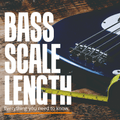Slidin' into the weekend like....
By Strings Direct – 29 August, 2023
 Forget the scorching temperatures of the 4-Day Easter Bank Holiday weekend, this past weekend was the one the Strings Direct team had been looking forward to for some time. Why’s that you may ask!? Well, a few weeks ago saw the return of the fantastic Tedeschi Trucks Band playing two sold out nights at the London Palladium and a few of the staff here were lucky enough to head there on Saturday night…. It was a real treat!
Whilst these guys are no doubt a world class band, the real highlight was always going to be seeing the man,
Derek Trucks himself, and he did not disappoint! Tone, technique, phrasing... he had it all! In bucket loads! With this in mind, we thought there would be no better time than to put pen to paper (well, bang away at a keyboard!) for another blog entry, this time giving you a little guide to the slide.
You may hear some people refer to slides as bottlenecks. Many moons ago, before slides were produced on a commercial scale, old blues players would remove the top from a wine bottle, smooth the edges and used it as a slide, hence the name ‘bottleneck’ slide. Glass medicine bottles were also popular makeshift slides. Jimi Hendrix had been known to use his cigarette lighter and beer cans as make-do slides.
Forget the scorching temperatures of the 4-Day Easter Bank Holiday weekend, this past weekend was the one the Strings Direct team had been looking forward to for some time. Why’s that you may ask!? Well, a few weeks ago saw the return of the fantastic Tedeschi Trucks Band playing two sold out nights at the London Palladium and a few of the staff here were lucky enough to head there on Saturday night…. It was a real treat!
Whilst these guys are no doubt a world class band, the real highlight was always going to be seeing the man,
Derek Trucks himself, and he did not disappoint! Tone, technique, phrasing... he had it all! In bucket loads! With this in mind, we thought there would be no better time than to put pen to paper (well, bang away at a keyboard!) for another blog entry, this time giving you a little guide to the slide.
You may hear some people refer to slides as bottlenecks. Many moons ago, before slides were produced on a commercial scale, old blues players would remove the top from a wine bottle, smooth the edges and used it as a slide, hence the name ‘bottleneck’ slide. Glass medicine bottles were also popular makeshift slides. Jimi Hendrix had been known to use his cigarette lighter and beer cans as make-do slides.  Whilst these certainly did the job, fortunately, we don’t have to resort to such improvisation today as there are literally hundreds of slides available in a whole host of dimensions constructed from a wide range of materials too.
Slides have been used by countless guitarists for decades. When executed well, slide playing can deliver some of the most emotive and unique sounds heard on a guitar. If you’ve seen some of the greats slipping and sliding up and down the neck and thought, (much like we have) “that sounds awesome!... it looks fairly easy too!... How hard can it be!?” you may have come crashing down back to Earth having realised that playing slide guitar is an art in itself and a completely different animal to ‘conventional’ guitar playing.
However, do not be deterred, even the slide greats started somewhere. If you listen to the advice of many of these players, you’ll often hear them say that finding the right slide can really help set you on the right path in your slide playing career. Some serious slide players take the view that the slide becomes an extension of your hand meaning that finding something that not only sounds great but fits well is paramount.
Below we’ll run through a few of the fundamental things to look out for when buying your first slide, or even if you’re thinking of adding another to your collection. Let’s slide in… (sorry, been waiting to say that for 4 paragraphs!)
Whilst these certainly did the job, fortunately, we don’t have to resort to such improvisation today as there are literally hundreds of slides available in a whole host of dimensions constructed from a wide range of materials too.
Slides have been used by countless guitarists for decades. When executed well, slide playing can deliver some of the most emotive and unique sounds heard on a guitar. If you’ve seen some of the greats slipping and sliding up and down the neck and thought, (much like we have) “that sounds awesome!... it looks fairly easy too!... How hard can it be!?” you may have come crashing down back to Earth having realised that playing slide guitar is an art in itself and a completely different animal to ‘conventional’ guitar playing.
However, do not be deterred, even the slide greats started somewhere. If you listen to the advice of many of these players, you’ll often hear them say that finding the right slide can really help set you on the right path in your slide playing career. Some serious slide players take the view that the slide becomes an extension of your hand meaning that finding something that not only sounds great but fits well is paramount.
Below we’ll run through a few of the fundamental things to look out for when buying your first slide, or even if you’re thinking of adding another to your collection. Let’s slide in… (sorry, been waiting to say that for 4 paragraphs!)
Lengths
Slides are made in a variety of different lengths. For instance, some players may need a slide to cover all six strings whilst others will only need to play a few strings at a time so will be content with something a little shorter. Full-length slides typically measure around 70mm in length and the smallest slides we supply are the Jim Dunlop Shy Slide and Knuckle Slides… both types coming in at a diminutive 25mm in length. There are plenty of other lengths available too so it’s worth checking them out to see which will suit your needs the best. It’s worth bearing in mind that the length of the slide you choose will correlate with the finger you’ll be wearing your slide on. For instance, your ring and pinky fingers will certainly benefit from a short-medium length slide, which will help also help keep the slide well balanced whilst you play. Anything that’s too long typically increases the weight which can make it challenging to manoeuvre up and down the neck.
On our site, we’ve grouped slides of similar length together to help make it easy to narrow down your selection. Simply use the filter labelled 'LENGTH OF SLIDE' to help you make your choice.
Full-length slides typically measure around 70mm in length and the smallest slides we supply are the Jim Dunlop Shy Slide and Knuckle Slides… both types coming in at a diminutive 25mm in length. There are plenty of other lengths available too so it’s worth checking them out to see which will suit your needs the best. It’s worth bearing in mind that the length of the slide you choose will correlate with the finger you’ll be wearing your slide on. For instance, your ring and pinky fingers will certainly benefit from a short-medium length slide, which will help also help keep the slide well balanced whilst you play. Anything that’s too long typically increases the weight which can make it challenging to manoeuvre up and down the neck.
On our site, we’ve grouped slides of similar length together to help make it easy to narrow down your selection. Simply use the filter labelled 'LENGTH OF SLIDE' to help you make your choice.
Inside Diameter
The size of the slide you choose will, of course, depend on the size of your fingers. You only have to look at your own hand to know that each finger varies slightly in thickness, therefore it’s important to consider which finger you will be placing the slide on. Your little finger/pinky finger is one possible option. Using a slide on this finger is desirable as it frees up your 1st, 2nd and 3rd fingers to play ‘normally’ without the need to constantly remove the slide every time you need to fret a chord. The pinky is your smallest and weakest finger in terms of strength so controlling a bigger slide with this finger can prove more difficult. You can see some of our narrower slides here. The most popular digit that players wear their slide on is the 3rd finger (ring finger). The reason being is that you can use the fingers either side to help control the movement of the slide (see image below) and again you still have the first two fingers free for fretting the strings. Your middle and first fingers are also viable options too, but obviously, bear in mind these fingers are a bit chunkier than the aforementioned ring and pinky fingers so a larger size would be needed here. You can see a selection of our wider slides here.
The sizing of most slides on the market are measured across the inside diameter of the slide. The inside diameter refers to the size of the main hole of the slide where your finger fits through. When choosing your slide, we would advise considering one with a little bit of extra room if you can. The reason is that as you play, your fingers will start to heat up, sweat and expand slightly. If your slide is snug before you even start playing, chances are it’s going to prove a bit of a task to remove when you’ve finished. Not a challenge you want if you are attempting to remove your slide between songs…. Nobody wants to have to run off stage and grab the fairy liquid from the bar staff!!
Of course, on the flip side of this, if you choose a slide that’s too big, there’s always the risk of the slide feeling a bit more cumbersome and loose which can hinder your control of the slide and therefore your technique. We’ve measured the diameter of all of the slides we sell online. These are categorised down the left-hand side of the screen so if you know which size you are after, simply use the 'INSIDE DIAMETER' filter down the left-hand side of the Slides screen.
Your middle and first fingers are also viable options too, but obviously, bear in mind these fingers are a bit chunkier than the aforementioned ring and pinky fingers so a larger size would be needed here. You can see a selection of our wider slides here.
The sizing of most slides on the market are measured across the inside diameter of the slide. The inside diameter refers to the size of the main hole of the slide where your finger fits through. When choosing your slide, we would advise considering one with a little bit of extra room if you can. The reason is that as you play, your fingers will start to heat up, sweat and expand slightly. If your slide is snug before you even start playing, chances are it’s going to prove a bit of a task to remove when you’ve finished. Not a challenge you want if you are attempting to remove your slide between songs…. Nobody wants to have to run off stage and grab the fairy liquid from the bar staff!!
Of course, on the flip side of this, if you choose a slide that’s too big, there’s always the risk of the slide feeling a bit more cumbersome and loose which can hinder your control of the slide and therefore your technique. We’ve measured the diameter of all of the slides we sell online. These are categorised down the left-hand side of the screen so if you know which size you are after, simply use the 'INSIDE DIAMETER' filter down the left-hand side of the Slides screen.
Wall Thickness
The outside diameter measures the width of the slide from one outside edge to the other, not just the area where your finger goes. This is quite significant, as two slides could both have an inside diameter of 20 mm but one could still have a larger outside diameter than the other. What this indicates is that the slide with the larger outside diameter has what is commonly referred to as a “thicker wall”. Wall thickness will often be dictated by the material of the slide itself (more on that below) and if you can picture the difference between a fine wine glass and a thick coffee mug, you’ll see what we mean here. Wall thickness is one of the factors that has a bearing on a slide’s tonal properties. Some of the cheaper glass slides that are available today can have thinner walls (just 1mm-2mm). These are great as they make the slide nice and light, however, one of the trade-offs here is that a thin-walled slide tends to lack the body and tone usually associated with a slide with thicker walls.
Wall thickness is one of the factors that has a bearing on a slide’s tonal properties. Some of the cheaper glass slides that are available today can have thinner walls (just 1mm-2mm). These are great as they make the slide nice and light, however, one of the trade-offs here is that a thin-walled slide tends to lack the body and tone usually associated with a slide with thicker walls.
Weight
The overall weight of the slide will be dependent on a combination of the factors we have mentioned above. Obviously the larger the dimensions of the slide, the heavier it will tend to be, however, the most influential factor on weight is the material the slide is constructed from. For instance, brass slides are heavier than most other materials so even a smaller brass slide can be heavier than a larger glass slide. Weight is a significant factor as it can dictate how easy the slide is to control (depending on which finger you choose to wear it on). For instance, a heavier slide on your pinky may feel a little too weighty and will require more energy to move it around which could have a detrimental effect on your technique and therefore will certainly impact your tone. A slide can be as light as just 12 grams and the heaviest slides can weigh well over 100 grams. That being said, a heavy and dense slide can certainly help produce a greater depth of tone and sustain notes for longer. Those that can persevere with a heavier slide will certainly reap the benefits. If you’re just starting out, we’d recommend opting for a lighter slide as this will help you concentrate on your technique first. Once you’ve got that down, the tone should naturally follow!Material
Slides are constructed from a variety of materials. When slides were first fashioned from bottlenecks, glass was the obvious choice. However, as the demand for slides has grown, there has been an increase in the various materials offered by manufacturers. Glass still remains one of the most popular materials (sometimes labelled as pyrex by some brands). Glass slides are often favoured by electric players. They’re light in weight so don’t deliver as much sustain as other materials, particularly when used acoustically. However, when you are playing electric guitar, the volume and gain of your set will help give that extra oomph when needed. Glass gives a nice smooth and warm tone too which is favourable for a lot of slide players. Other common materials include different metals such as brass, chrome and steel. Ceramic is another material that has grown in popularity over recent years. The interior of these slides helps absorb sweat and moisture.. Something that can often be a hindrance to controlling a slide. As you can imagine, each material delivers its own tonal characteristics. One is neither ‘better’ than the other but you may wish to opt for a specific material to help you achieve the tone you're after. You’ll find that some slide materials will create a bit more of a ‘scraping’ tone as they travel across the strings. This is particularly true when the slide makes contact with the wound strings.
Below is a very general outline of the typical tonal response you can expect from each type of material;
Glass - smooth and warm tone.
Brass – Warm and Resonant tone. Brass tends to be heavier in weight.
Steel - Brighter tone, heavier than glass but will typically deliver more sustain.
Chrome - Bright Tone, Versatile sound.
Aluminium – Light in weight and smooth in tone. Can be more expensive than other materials
Porcelain, ceramic – Brighter than Glass but warmer than brass. Thicker walls help create better sustain. Ceramic can sound less scrapey on the wound strings than steel slides too.
As you can imagine, each material delivers its own tonal characteristics. One is neither ‘better’ than the other but you may wish to opt for a specific material to help you achieve the tone you're after. You’ll find that some slide materials will create a bit more of a ‘scraping’ tone as they travel across the strings. This is particularly true when the slide makes contact with the wound strings.
Below is a very general outline of the typical tonal response you can expect from each type of material;
Glass - smooth and warm tone.
Brass – Warm and Resonant tone. Brass tends to be heavier in weight.
Steel - Brighter tone, heavier than glass but will typically deliver more sustain.
Chrome - Bright Tone, Versatile sound.
Aluminium – Light in weight and smooth in tone. Can be more expensive than other materials
Porcelain, ceramic – Brighter than Glass but warmer than brass. Thicker walls help create better sustain. Ceramic can sound less scrapey on the wound strings than steel slides too.
Signature Slides
As we mentioned earlier, there are plenty of players who have made a name for themselves by playing slide. Not content with the standard cylindrical pipe, many manufacturers have developed signature slides for these players and made them available to us mere mortals. The cynics amongst us may see these slides as no more than a perfect excuse for the big brands to make a few extra quid. Well, perhaps!! But, they’re also a testament to the fact these slide monsters are extremely particular about what they use! They don’t just use any old slide, instead, they subscribe to the fact that having the right slide helps them, it doesn’t hinder them. Here’s a quick rundown of just a few of the players who have their own signature slide; Keb Mo, Gary Clark Jnr, Derek Trucks, Johnny Winter, Billy Gibbons, Ariel Posen, Joey Landreth, Rich Robinson (The Black Crowes), Joe Perry.... And there’s plenty more where that came from too!!Unique Features
The Rock Slides are a great example of this. The inside of these slides taper towards the top creating a nice snug fit preventing them from moving about too much. It also has a nice cutaway around the bottom of the slide so that you can bend your finger without it getting caught on the bottom. In addition, the slides also have a nice little flat point on the side to rest your adjacent finger for added comfort. Cushty!! The Jim Dunlop Shy Slide (see image below) is another innovation that is pretty unique. This diminutive slide attaches to your finger using a velcro strap and doesn't tend to get in the way as much as a full sized slide would allowing you to easily switch between playing fretted notes and sliding.
The Jim Dunlop Shy Slide (see image below) is another innovation that is pretty unique. This diminutive slide attaches to your finger using a velcro strap and doesn't tend to get in the way as much as a full sized slide would allowing you to easily switch between playing fretted notes and sliding.

Straight Up!
... Not for every slide. There are a few slides on the market whose sides are not straight up and down, instead, they have a flared edge to them. If you can imagine the old bootcut style jeans you’ll get an idea of the shape we mean. Slides shaped in this way are said to help increase the slides contact with the strings but they'll also help players control the slide when used across different radiused fingerboards.Conclusion
As you can see there’s plenty of different things to consider when selecting a slide. We understand that there’s a lot to digest here and hope that this hasn’t bombarded you with information overload. All the weight and dimensions of the slides are available within each listing so if you wanted to choose a specific size, you can use the filters on our slides page. Of course, if you need any further information, feel free to get in touch with us and we’ll see if we can help you further. As always, thanks again for reading and your continued support of the blog… it always means a lot! See you on the other side :-)




